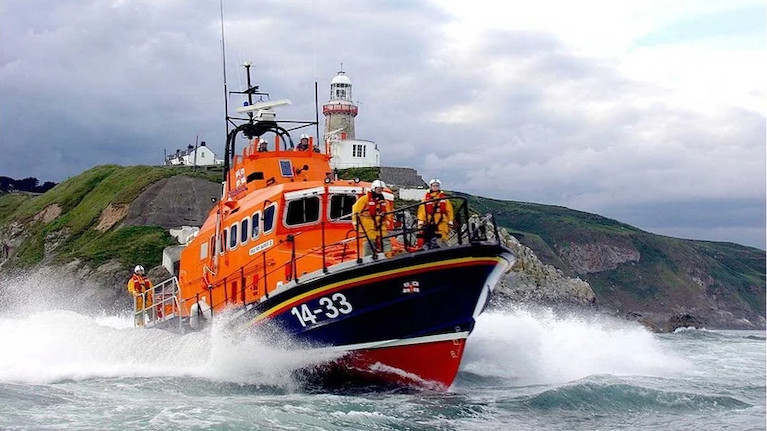Displaying items by tag: Howth RNLI
Howth RNLI Launch Both Lifeboats to Aid Kayakers in Difficulty
The crew of Howth RNLI launched both their Inshore and All-Weather lifeboats today (Sunday 13 March) to reports of six kayakers in difficulty off the coast of Malahide with one person having capsized and struggling in the water.
Howth inshore lifeboat was launched at 11:55 am and the Howth all-weather lifeboat launched shortly after. Weather conditions were poor with strong easterly winds and one-metre-high seas.
Both lifeboats made their way to Malahide to commence a search for the kayakers. Once on scene, the crew of Howth inshore lifeboat located four of the kayakers north of Malahide. Two crew members entered the water to help the kayakers ashore onto Donabate Beach. The crew assessed the kayakers and brought them to a safe location on the beach before they were handed into the care of the Howth Coast Guard Unit. The two remaining kayakers had made their way ashore on the southern side of Malahide estuary and were also assisted by the Howth Coast Guard Unit.
Speaking following the call-out, Howth RNLI inshore lifeboat Helm, Lorcan Dignam said, ‘Thankfully this call-out in difficult conditions ended well with all kayakers returned safely to shore. Our crews train in all conditions so that when the pager goes off, we can respond quickly and save lives at sea.'
'Weather and sea conditions can change very quickly, so it’s really important to check the weather forecast and what the tides are doing before you go out on the water. It’s also very important to have a way of calling for help and keeping it within reach. If you’re kayaking, a handheld VHF radio or even a mobile phone in a waterproof pouch can help you communicate if you get into trouble.’
Howth RNLI All-Weather Lifeboat Rescue Fishing Trawler Stranded in Irish Sea
Howth RNLI launched the all-weather lifeboat to rescue a fishing trawler with steering problems just off Skerries in North Dublin.
The RNLI pagers sounded at 3.02 am on Wednesday 30th December to reports of a fishing vessel in difficulty south-east of Skerries. The all-weather lifeboat was launched and located the stricken fishing vessel which had no steering and unable to manoeuvre.
The volunteer lifeboat crew took the fishing vessel in tow and brought the vessel to the safety of Skerries harbour.
The crew of the fishing vessel were in good spirits despite the mechanical failure.
The Howth Lifeboat and volunteer crew returned to Howth station and stood down at 5.45 am.
Speaking following the callout, Fred Connolly, Howth RNLI Lifeboat Coxswain said: ‘Our volunteer lifeboat crew are always ready to respond to a call for help even in the early hours and we train for situations just like this. We were delighted to be able to quickly locate the fishing vessel, commence the tow and bring the vessel safely back to Skerries’.
Howth Lifeboat Rescues Drowning Woman
The Lifeboat crew had been out on exercise when they spotted the 31 year old female struggling above the waves. She had sunk two feet beneath the water when the crew reached her. They managed to catch her clothing and pull her aboard the All Weather Lifeboat (ALB), immediately administering first aid.
The RNLI crew then took the lady safely to Howth harbour, as she was thought to be too distressed to be lifted by the Coastguard helicopter which was also in attendance. An awaiting ambulance brought her to Beaumont Hospital to recover.
Howth RNLI voluntary crewmember Dave Howard says:
"All the crew were relieved that this rescue had a positive ending, the lady would certainly have died had we not already been at sea on exercise. She was very lucky"
Related Safety posts
RNLI Lifeboats in Ireland
Safety News
Rescue News from RNLI Lifeboats in Ireland
Coast Guard News from Ireland
Water Safety News from Ireland
Marine Casualty Investigation Board News
Marine Warnings































































